Experimental Investigation on Boundary Layer Control and Pressure Performance for Low Reynolds Flow with Chemical Reaction
Abstract
:1. Introduction
2. Theoretical Analysis of Low Re Flow with Chemical Reaction
2.1. Supersonic Chemical Reaction Platform (SCRP)
2.2. Low Re Flow with Chemical Reaction
- (1)
- Unlike general diffusers, the entrance of an SCRP diffuser is rectangular and has a large aspect ratio. The airflow in this channel significantly differs from that in a circular tube. The airflow in the corner of the channel is subject to a strong three-dimensional effect and may produce separation.
- (2)
- A chemical reaction occurs in the supersonic airflow in the optical cavity, generating excess amounts of energy. If the pressure of the optical cavity is excessively high or the flow field structure in the optical cavity is poor, the energy generated cannot be extracted into the laser energy normally. Instead, it is converted into the internal energy of the air stream to ensure that the temperature of the air stream rises. In severe cases, the gas stream becomes “hot-blocked”, preventing the laser from working normally.
- (3)
- The characteristic Re number of the flow in an optical cavity is generally at least one order of magnitude lower than that of conventional supersonic flows (such as a flow in a supersonic wind tunnel). Consequently, the boundary layer in the channel is thicker, the growth rate is faster, and the viscous effect is more evident.
2.3. Composition and Working Principle of Diffuser
3. Experimental Research Set Up
3.1. Optical Cavity Boundary Layer Control Test
3.2. Supersonic Diffuser Test Piece
4. Experimental Results and Analysis
4.1. Experimental Results and Analysis of Optical Cavity Boundary Layer Control
4.1.1. Solid Plate Experiment Results
4.1.2. Slotted Plate Experiment Results
4.1.3. Mainstream Ejection Slot Test Results
4.1.4. Experimental Results of Orifice Plate
4.2. Experimental Results and Analysis of Pressure Performance
4.3. Discussion
- (1)
- Managing the boundary layer of the optical cavity and improving the pressure distribution, especially at the back part of the optical cavity, have been achieved to a certain extent.
- (2)
- Increasing the pumping volume of the boundary layer within a certain range can further reduce the thickness of the boundary layer and the pressure on the optical cavity, while increasing the chemical reaction platform power. However, excessive pumping volume reduces the power.
- (3)
- Among the three experimental parameters, the mainstream ejection mode was the most sensitive to pumping volume. When the pumping volume was increased to 6%, the chemical reaction platform power decreased significantly. The orifice plate was not highly sensitive to the pumping volume. When the pumping volume increased from 2% to 8%, the impact on the chemical reaction platform power was apparent.
- (1)
- When the supersonic diffuser operates at the design point, it can start smoothly and operate normally under an initial back pressure of 3.85 PD. If the flow rate of the active gas is properly increased, the diffuser performance can be further improved.
- (2)
- The results of experiment 1# show that the incoming flow of the chemical reaction platform was more sensitive to the blocked area of the downstream channel. If the blocked area is excessively large, the incoming flow of the chemical reaction platform will be blocked, resulting in abnormal operation of the reaction platform.
- (3)
- The results of experiments 2# and 3# show that the diffuser can be started smoothly at an initial back pressure of approximately 3.9 PD and stabilized the flow field in the optical cavity well, preventing the propagation of downstream disturbance and creating necessary conditions for a normal reaction in the optical cavity.
5. Conclusions
Author Contributions
Funding
Institutional Review Board Statement
Informed Consent Statement
Data Availability Statement
Conflicts of Interest
References
- Rowley, A.; Stehle, Y.; Kilby, L.; Bashant, C. Graphene oxide membranes: Controlled laser reduction for sensing applications. C 2023, 9, 74. [Google Scholar] [CrossRef]
- Cocean, A.; Cocean, I.; Cimpoesu, N.; Cocean, G.; Cimpoesu, R.; Postolachi, C.; Popescu, V.; Gurlui, S. Laser induced method to produce Curcuminoid-Silanol thin films for transdermal patches using irradiation of turmeric target. Appl. Sci. 2021, 11, 4030. [Google Scholar] [CrossRef]
- Huai, Y.; Jia, S.Q.; Wu, K.N.; Jin, Y.Q.; Sang, F.T. Numerical investigation of the boundary layer separation in chemical oxygen iodine laser. Opt. Laser Technol. 2017, 96, 276–282. [Google Scholar] [CrossRef]
- Sang, F.T.; Jin, Y.Q.; Fang, B.J. Chemical Oxygen-Iodine Lasers; National Defense Industry Press: Beijing, China, 2015. [Google Scholar]
- Saavedra, J.; Paniagua, G.; Lavagnoli, S. On the transient response of the turbulent boundary layer inception in compressible flows. J. Fluid Mech. 2018, 850, 1117–1141. [Google Scholar] [CrossRef]
- Polivanov, P.; Vishnyakov, O.; Sidorenko, A. Study of Plasma-Based Vortex Generator in Supersonic Turbulent Boundary Layer. Aerospace 2023, 10, 363. [Google Scholar] [CrossRef]
- Ramsay, J.; Sellier, M.; Ho, W.H. Effects of boundary layer suction control on flow through an axisymmetric diverging channel. J. R. Soc. New Zealand 2020, 51, 389–408. [Google Scholar] [CrossRef]
- Petha, S.; Vignesh, R.; Kim, T.H.; Kim, H.D. Control of the oscillations of shock train using boundary layer suction. Aerosp. Sci. Technol. 2021, 118, 107012. [Google Scholar] [CrossRef]
- Kade, S.A.; Tufan, K.G.; Rajan, K. Active Flow Control of a High-Lift Supercritical Airfoil with Microjet Actuators. AIAA J. 2020, 58, 2053–2069. [Google Scholar] [CrossRef]
- Pour, R.; Mohammad, J.; Masoumi, Y.; Rezaei, S.; Seyed, M.; Huang, G.P. Controlling flow separation over a curved ramp using vortex generator microjets. Phys. Fluids 2022, 34, 115114. [Google Scholar] [CrossRef]
- Reese, B.M.; Collins, J.; Emmanuel, G.; Fernandez, E.; Alvi, F.S. Nonlinear Adaptive Approach to Microjet-Based Flow Separation Control. AIAA J. 2022, 54, 3002–3014. [Google Scholar] [CrossRef]
- Gupta, P.; Kumar, P.; Rao, S.M.V. Low-frequency unsteadiness of recompression shock structures in the diffuser of supersonic ejectors. Phys. Fluids 2023, 35, 036119. [Google Scholar] [CrossRef]
- Weiss, A.; Olivier, H. Behavior of a shock train under the influence of boundary-layer suction by a normal slot. Exp. Fluids 2012, 52, 273–287. [Google Scholar] [CrossRef]
- Kawatsu, K.; Koike, S.; Kumasaka, T.; Masuya, G.; Takita, K. Pseudo-shock wave produced by backpressure in straight and diverging rectangular ducts. In Proceedings of the AIAA/CIRA 13th International Space Planes and Hypersonics Systems and Technologies Conference, AIAA, Capua, Italy, 16–20 May 2005; Volume 3285. [Google Scholar]
- Mahapatra, S.; Kumar, S.; Sinhamahapatra, K.P.; Ghosh, S. Large-eddy simulation of shock-turbulence interaction in supersonic diffuser flows. J. Turbul. 2017, 18, 512–538. [Google Scholar] [CrossRef]
- Sajben, M.; Bogar, T.J.; Kroutil, J.C. Experimental investigation of terminal shock sensors for mixed-compression inlets. J. Propuls. Power 1992, 8, 168–174. [Google Scholar] [CrossRef]
- Ikui, T.; Matsuo, K.; Sasaguchi, K. Modified diffusion model of pseudo-shock waves considering upstream boundary layers. Bull. JSME 1981, 24, 1920–1927. [Google Scholar] [CrossRef]
- Hsieh, T.; Bogar, T.J.; Coakley, T.J. Numerical simulation and comparison with experiment for self-excited oscillations in a diffuser flow. AIAA J. 1987, 25, 936–943. [Google Scholar] [CrossRef]
- Chen, J.; Ren, Y. Numerical simulations of the shock train in the diffuser of a supersonic wind tunnel. J. Tsinghua Univ. 2007, 47, 264–267. [Google Scholar]
- Chen, J.; Ren, Y. Numerical simulation to the pseudo-shock of the supersonic diffuser in the pressure recovery system. Acta Aerodyn. Sin. 2008, 26, 304–309. [Google Scholar]
- Lee, H.J.; Lee, B.J.; Kim, S.D.; Jeung, I.-S. Investigation of the pseudo-shock wave in a two-dimensional supersonic inlet. J. Vis. 2010, 13, 25–32. [Google Scholar] [CrossRef]
- Fan, X.; Yang, B.; Zhu, T.; Zhong, J. Investigation on design of Φ240mm hypersonic wind tunnel diffuser. Acta Aerodyn. Sin. 2017, 35, 633–639. [Google Scholar]
- Cong, C.; Liao, D.; Qiang, P.; Li, H.Z. Numerical simulations and experimental investigations of flow separation control in diffuser of transonic wind tunnel. J. Comput. Mech. 2012, 29, 561–566. [Google Scholar]
- Tong, H.; Sun, Q.; Shaowu, Z. Investigation and analyse on the diffuser of hypersonic wind tunnel. J. Exp. Fluid Mech. 2014, 28, 78–81. [Google Scholar]
- Huang, Z.; Zhang, G.; Geng, Z.; Chen, J. Performance of line-divergence subsection supersonic diffuser for CRP. High Power Laser Part Beams 2011, 23, 1211–1214. [Google Scholar] [CrossRef]


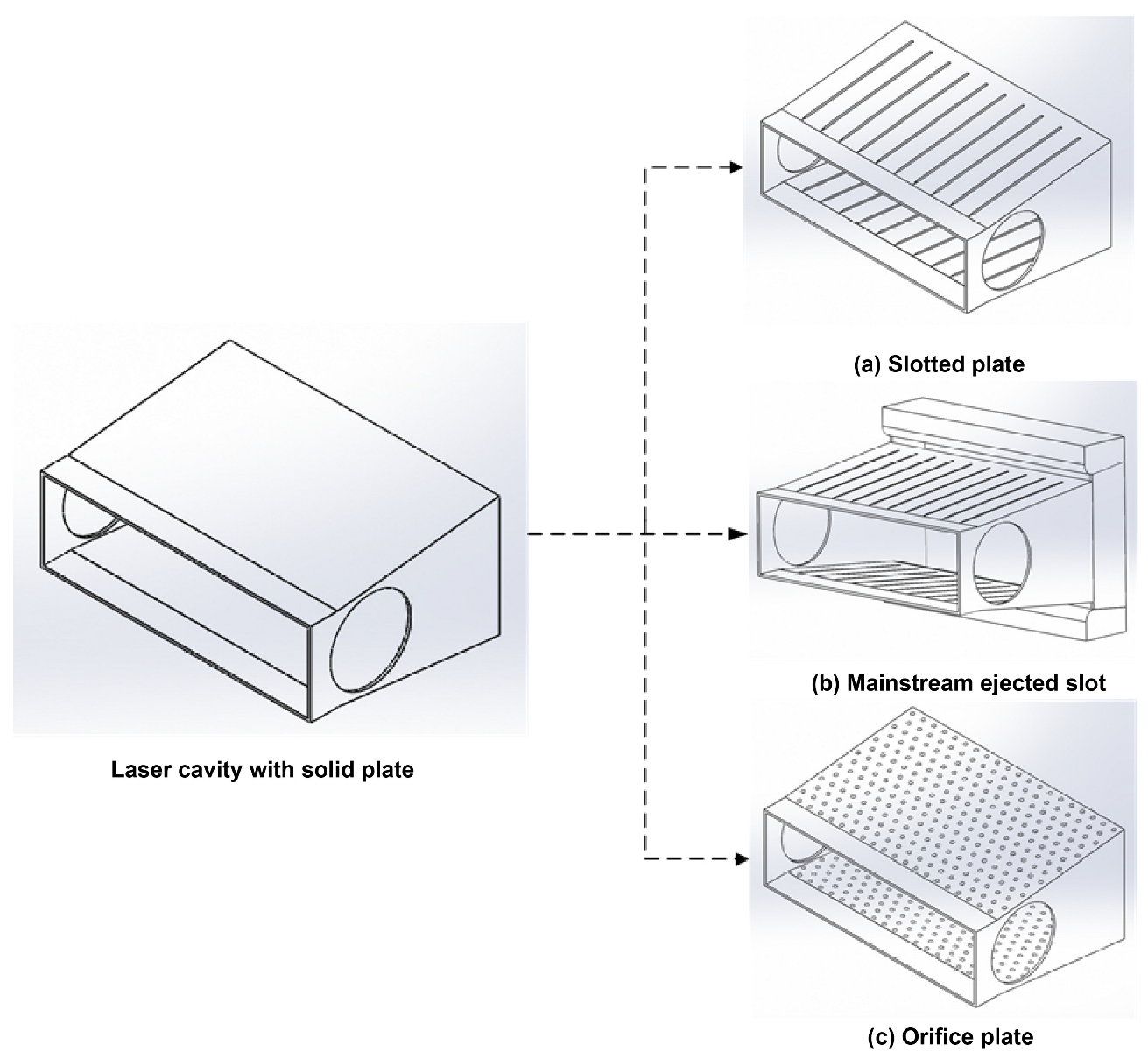
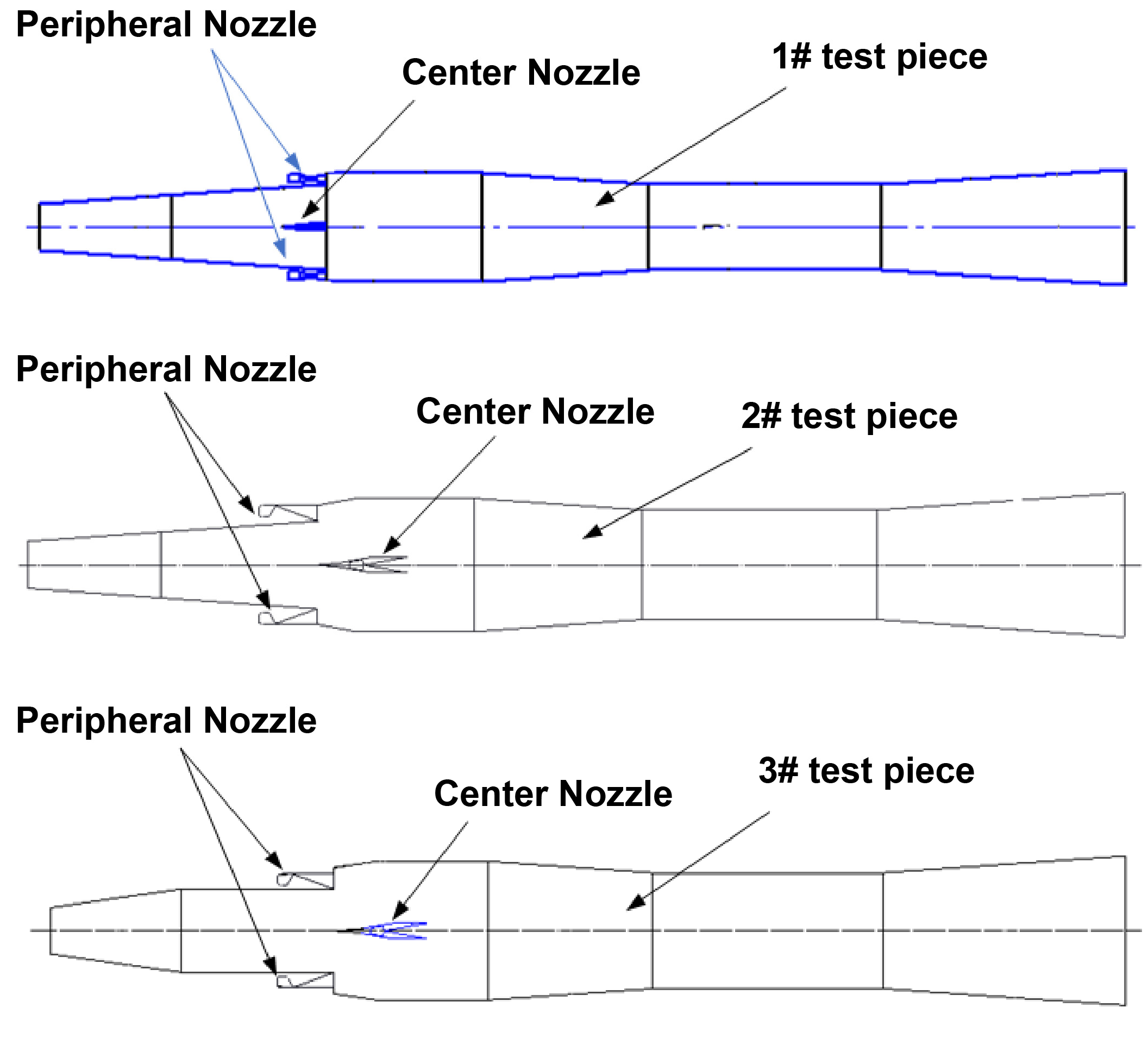
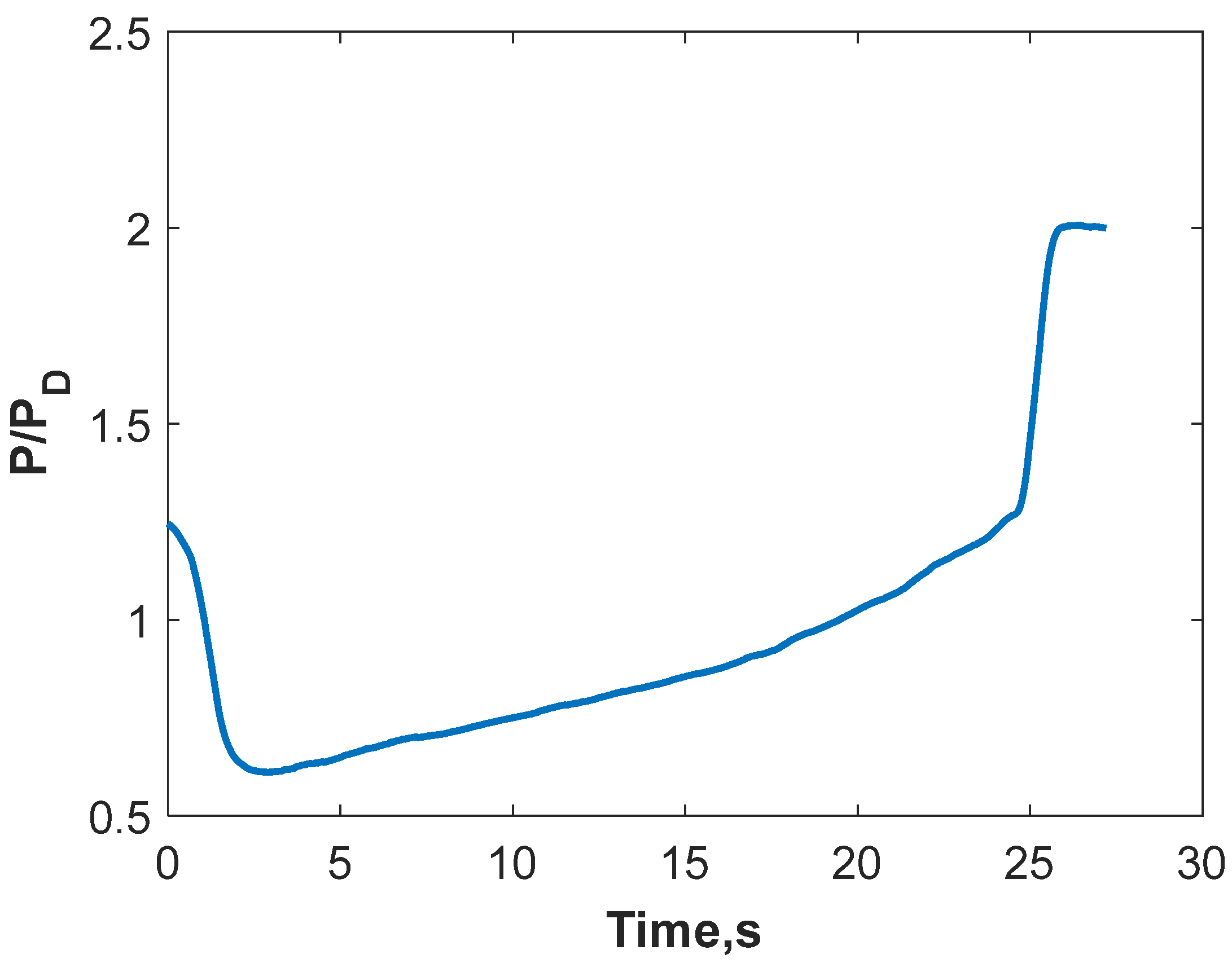
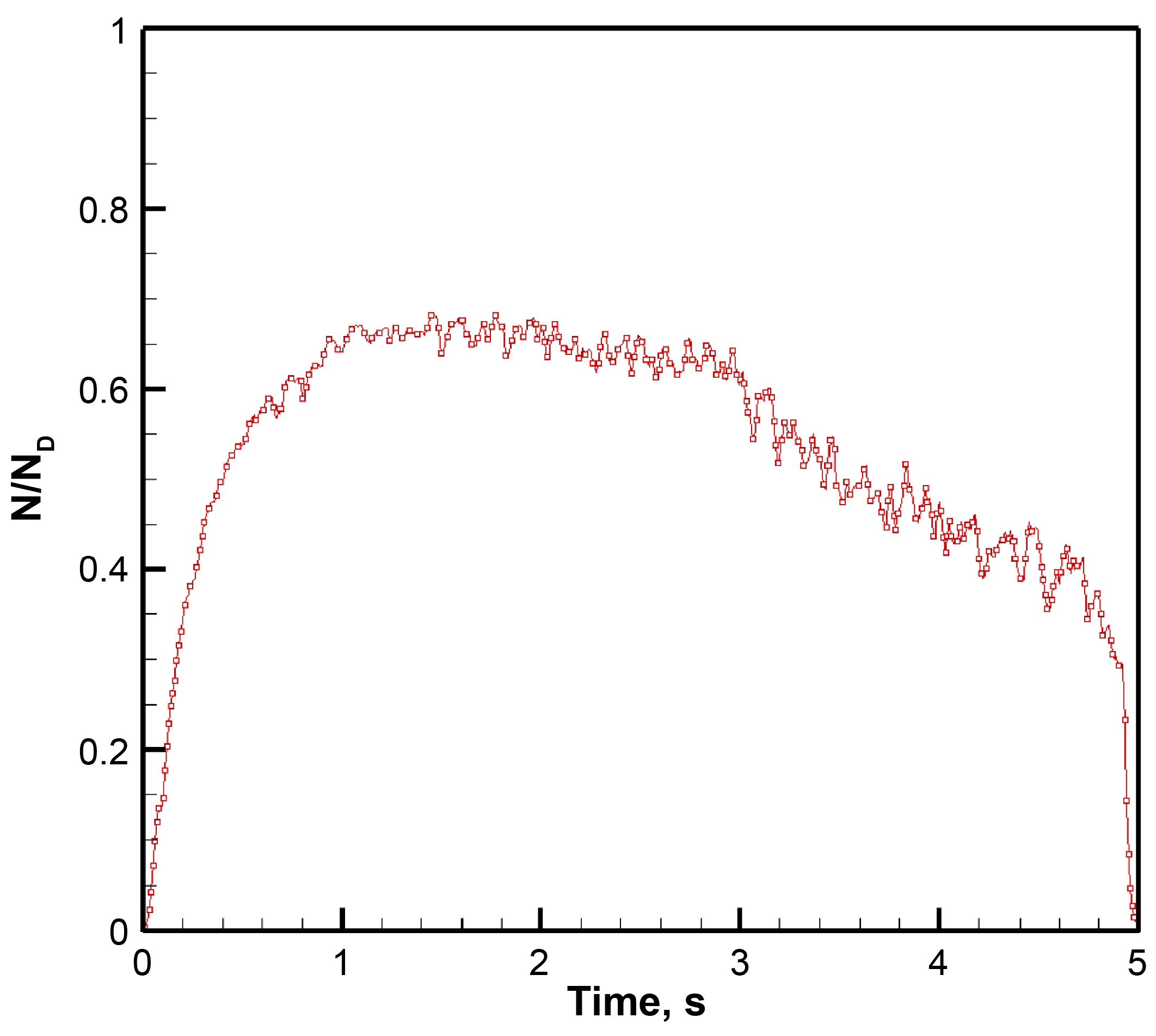
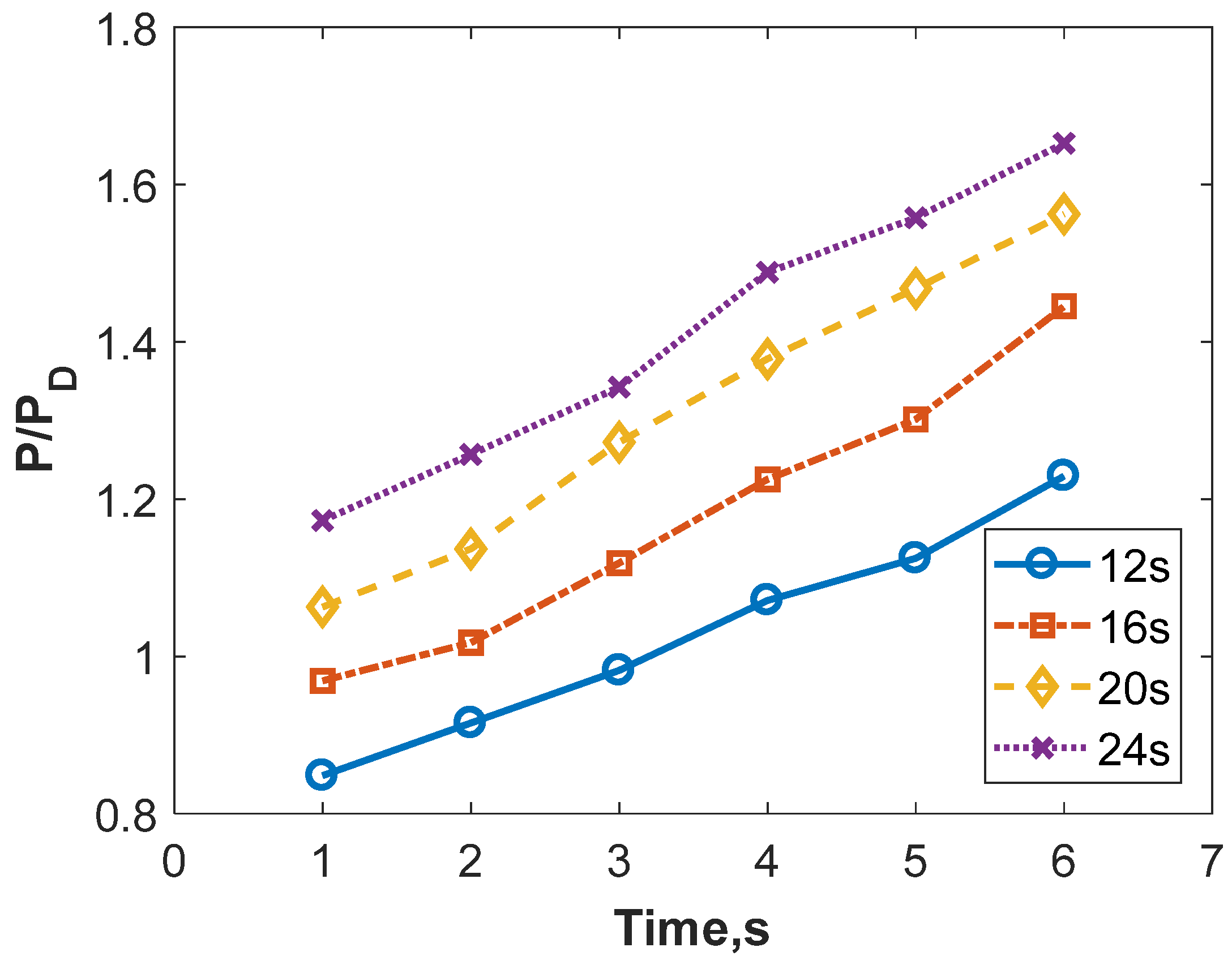

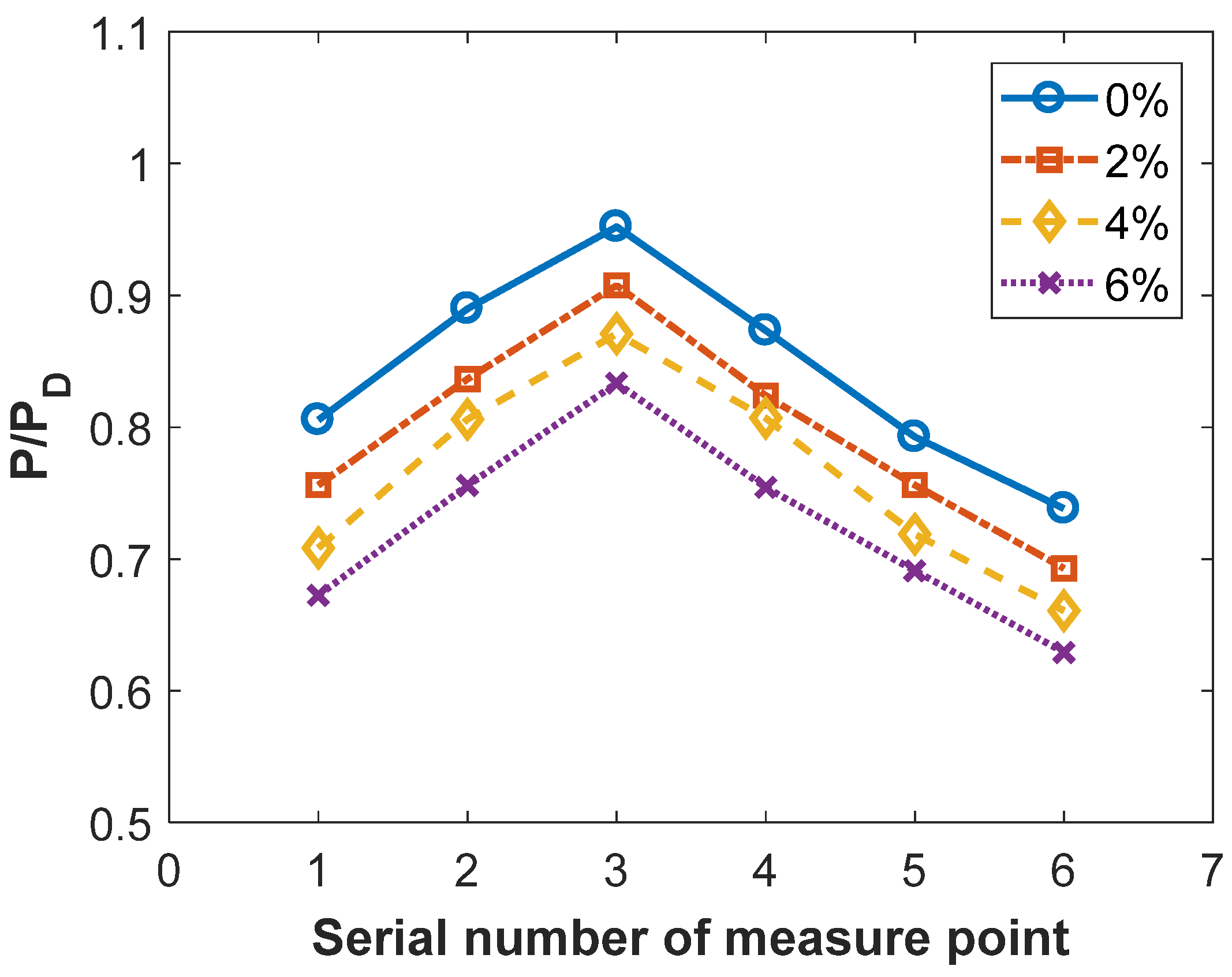
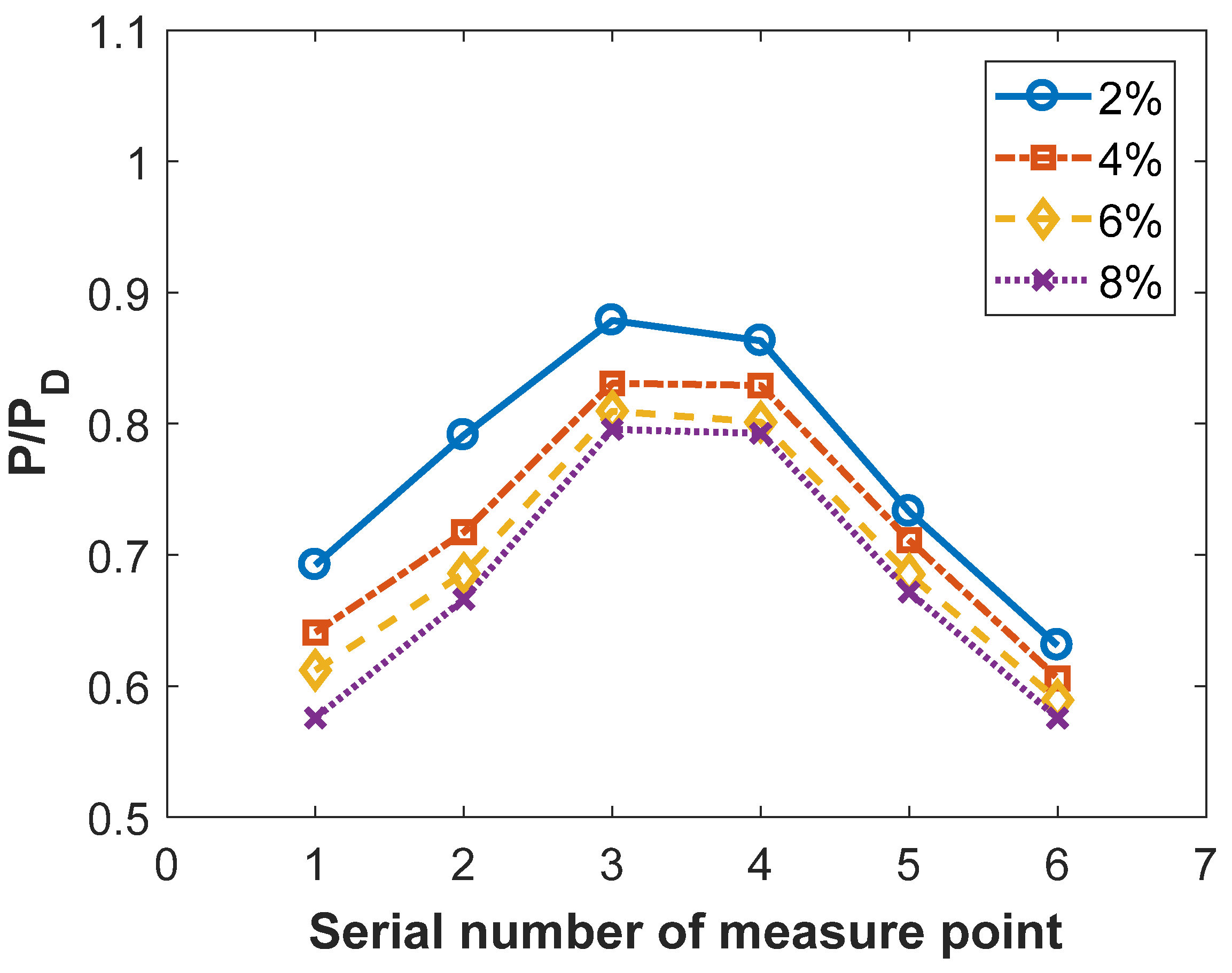

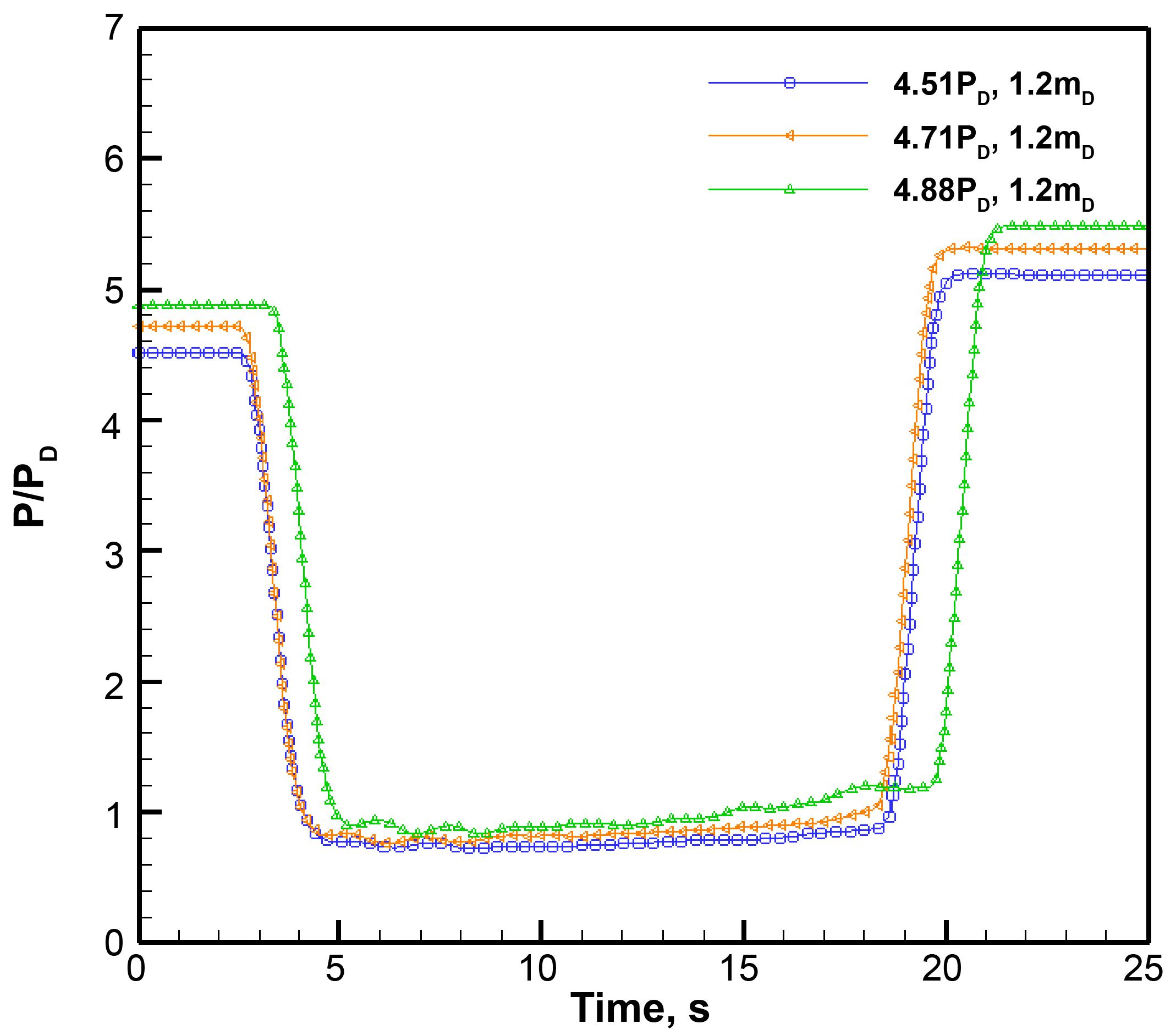
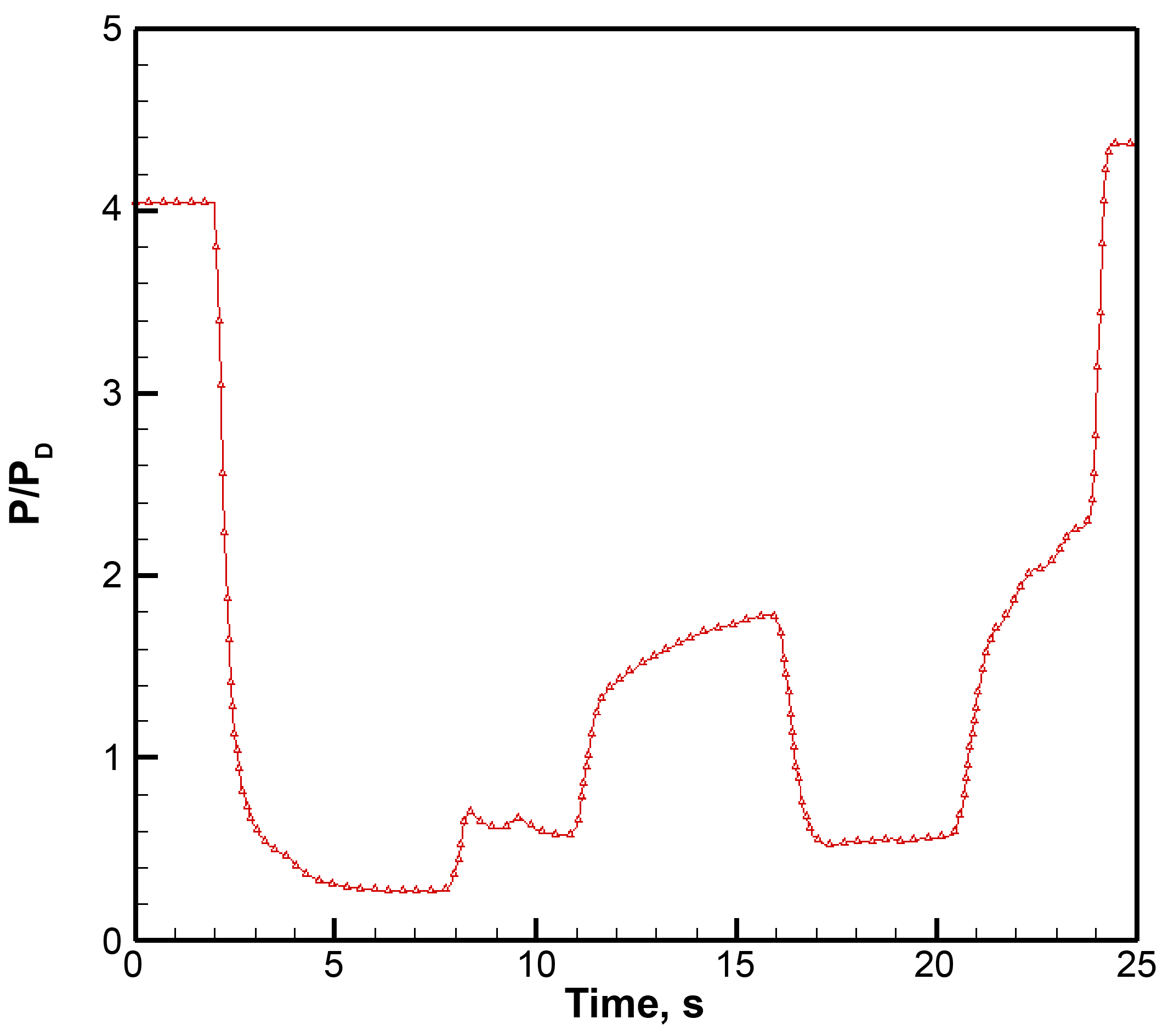

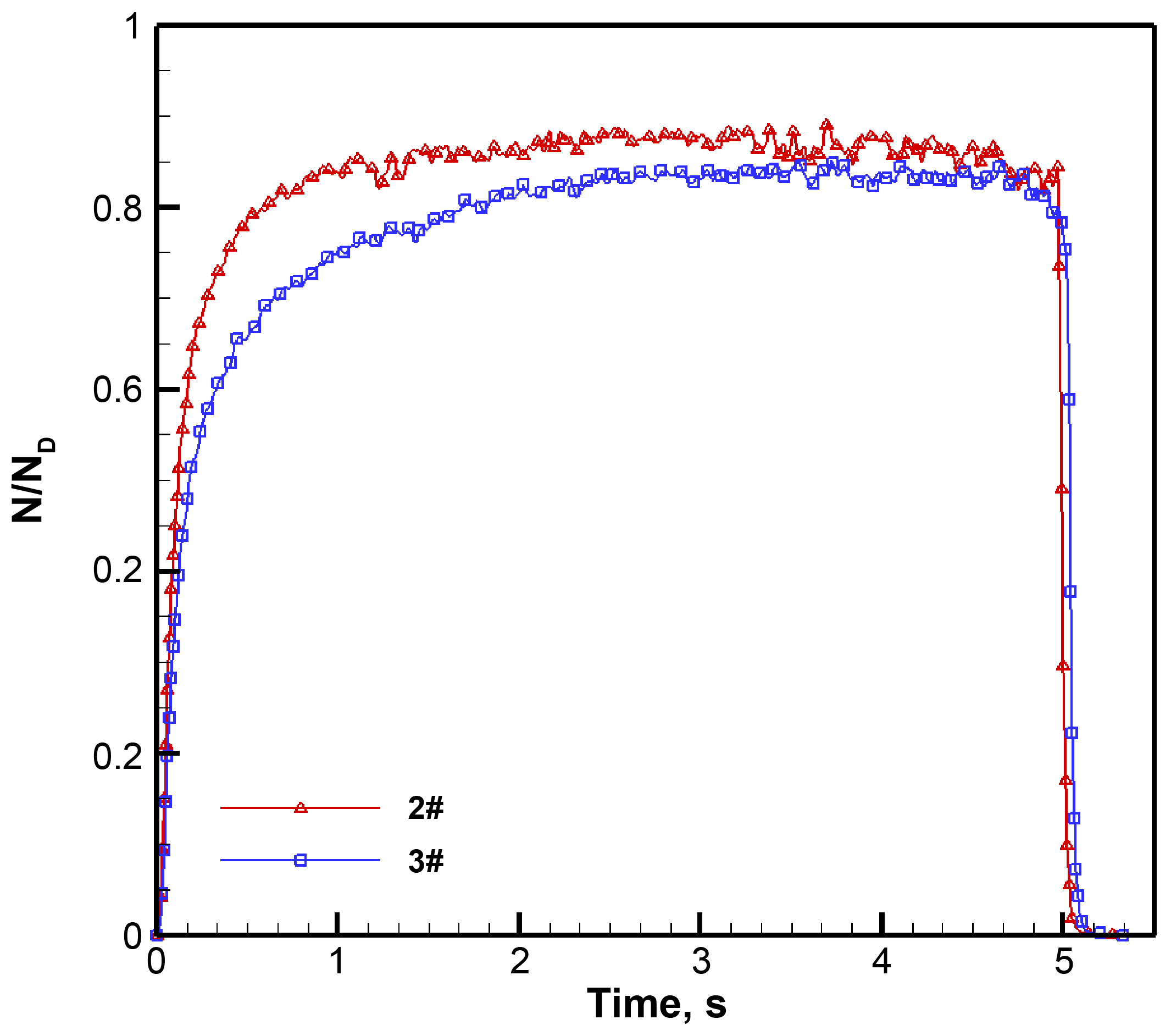
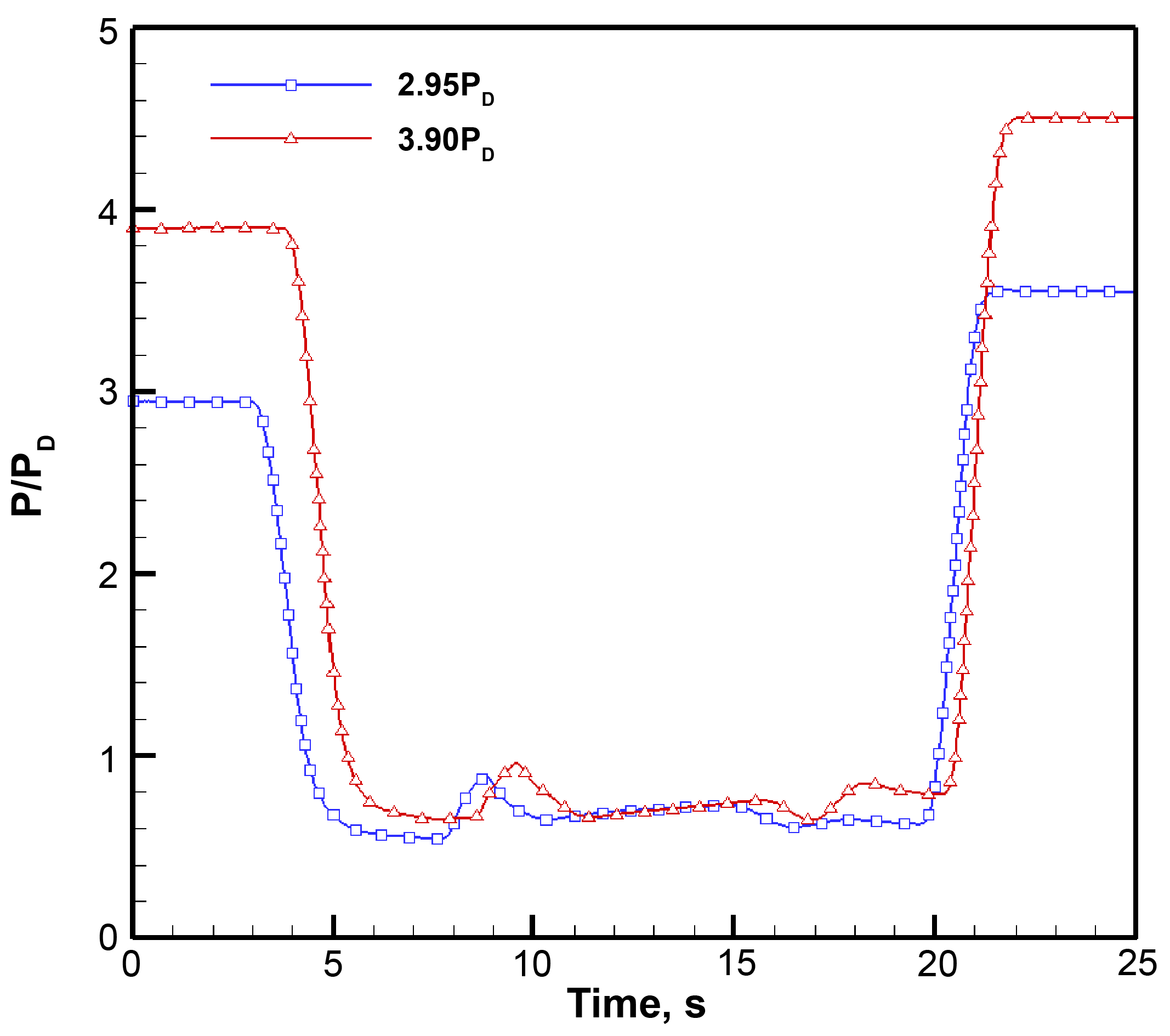
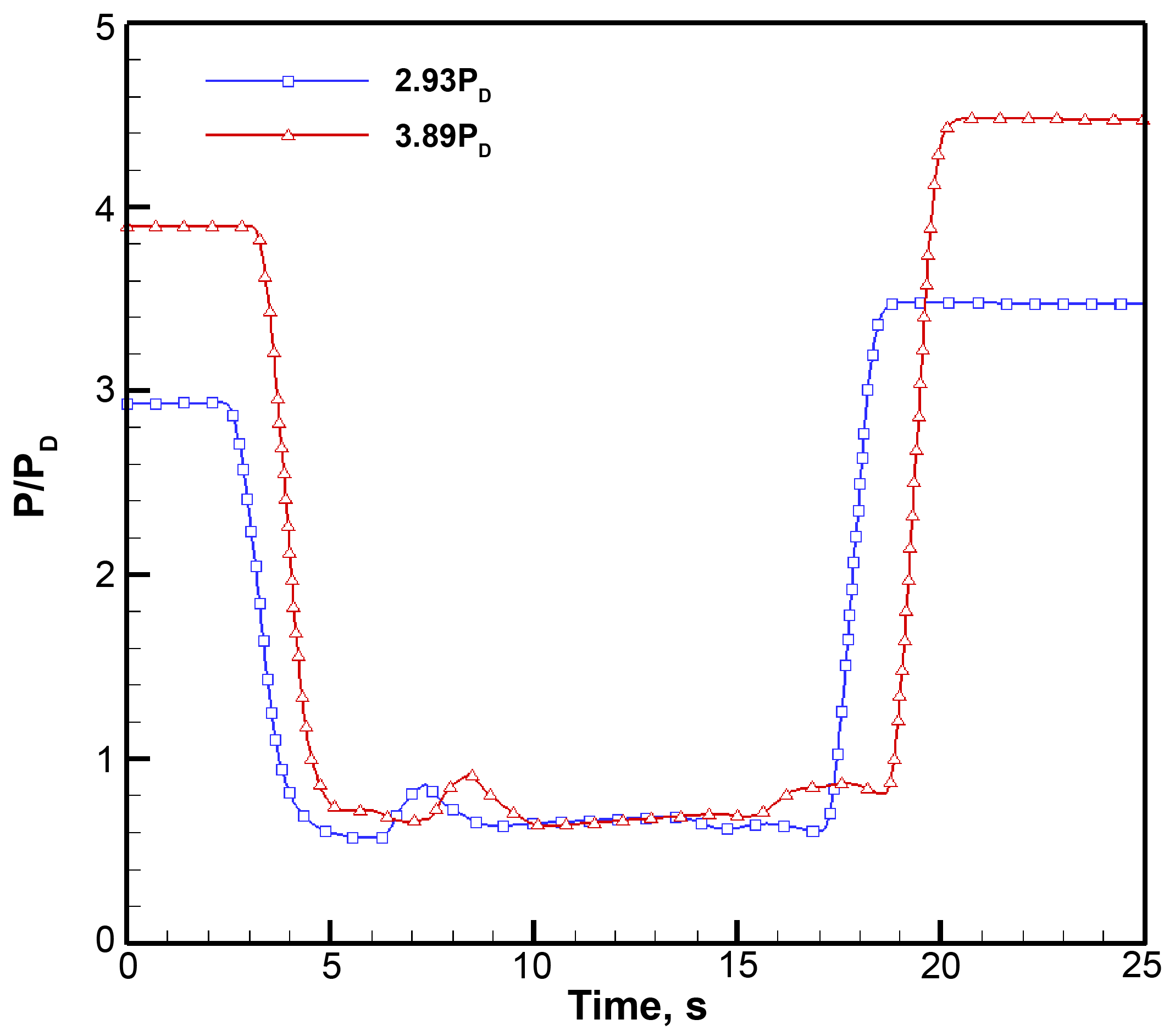
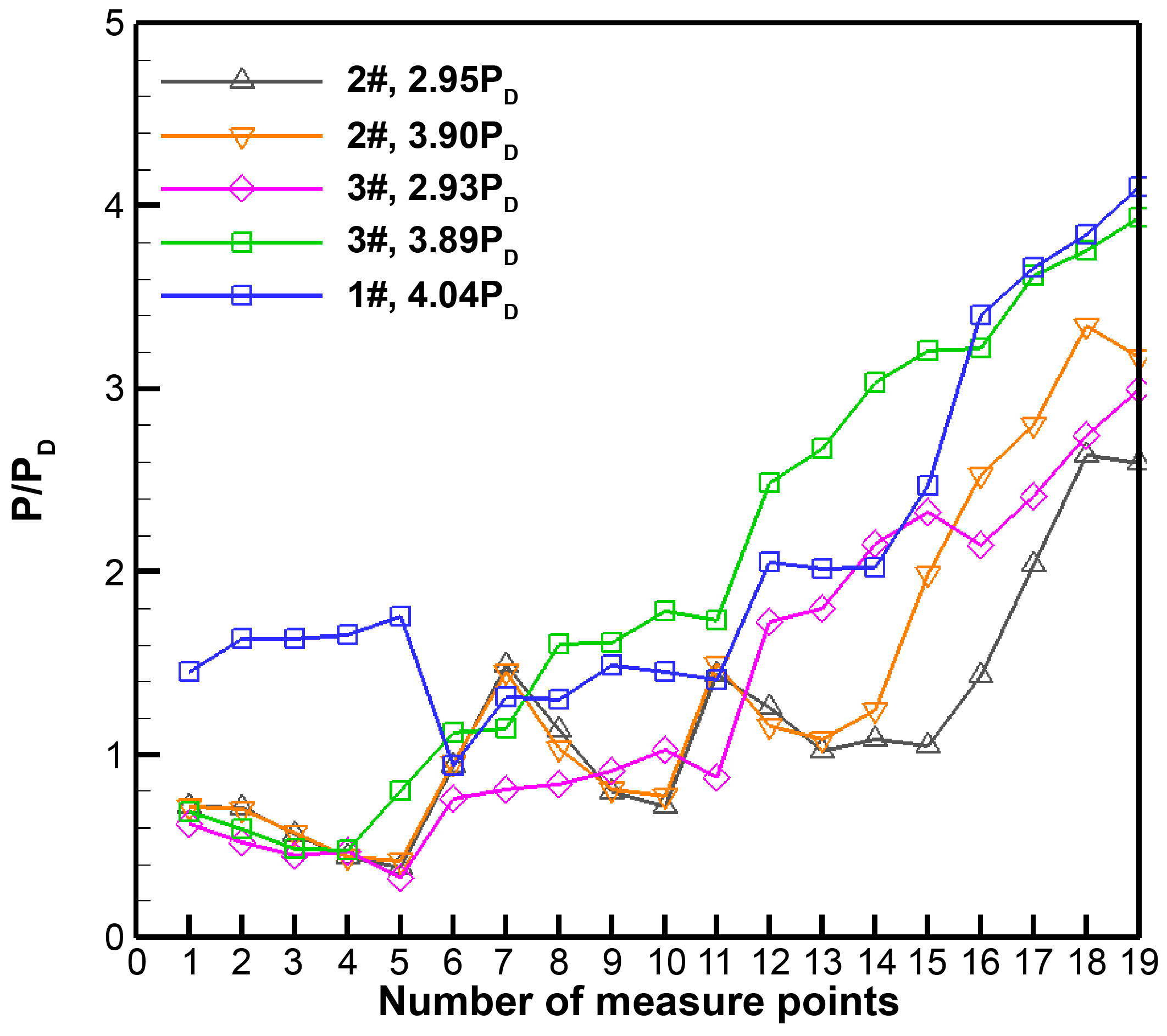
| Parameter | Value | Unit |
|---|---|---|
| Ma | 2.0 | |
| T0 | 500 | K |
| γ | 1.586 | |
| R | 708 | J/(kg·K) |
| Parameter | Value | Unit |
|---|---|---|
| Ma | 4.5 | |
| T0 | 300 | K |
| γ | 1.4 | |
| R | 287 | J/(kg·K) |
| Pumping Rate | N/ND |
|---|---|
| 2% | 0.695 |
| 4% | 0.698 |
| 6% | 0.682 |
| 8% | 0.664 |
| Condition | N/ND |
|---|---|
| mainstream ejection + 0% pumping | 0.688 |
| mainstream ejection + 2% pumping | 0.694 |
| mainstream ejection + 4% pumping | 0.689 |
| mainstream ejection + 6% pumping | 0.603 |
| Pumping Rate | N/ND |
|---|---|
| 2% | 0.637 |
| 4% | 0.631 |
| 6% | 0.642 |
| 8% | 0.635 |
Disclaimer/Publisher’s Note: The statements, opinions and data contained in all publications are solely those of the individual author(s) and contributor(s) and not of MDPI and/or the editor(s). MDPI and/or the editor(s) disclaim responsibility for any injury to people or property resulting from any ideas, methods, instructions or products referred to in the content. |
© 2023 by the authors. Licensee MDPI, Basel, Switzerland. This article is an open access article distributed under the terms and conditions of the Creative Commons Attribution (CC BY) license (https://creativecommons.org/licenses/by/4.0/).
Share and Cite
Xu, D.; Gu, Y.; Gao, X.; Ren, Z.; Chen, J. Experimental Investigation on Boundary Layer Control and Pressure Performance for Low Reynolds Flow with Chemical Reaction. Appl. Sci. 2023, 13, 11335. https://doi.org/10.3390/app132011335
Xu D, Gu Y, Gao X, Ren Z, Chen J. Experimental Investigation on Boundary Layer Control and Pressure Performance for Low Reynolds Flow with Chemical Reaction. Applied Sciences. 2023; 13(20):11335. https://doi.org/10.3390/app132011335
Chicago/Turabian StyleXu, Dachuan, Yunsong Gu, Xinglong Gao, Zebin Ren, and Jingxiang Chen. 2023. "Experimental Investigation on Boundary Layer Control and Pressure Performance for Low Reynolds Flow with Chemical Reaction" Applied Sciences 13, no. 20: 11335. https://doi.org/10.3390/app132011335





